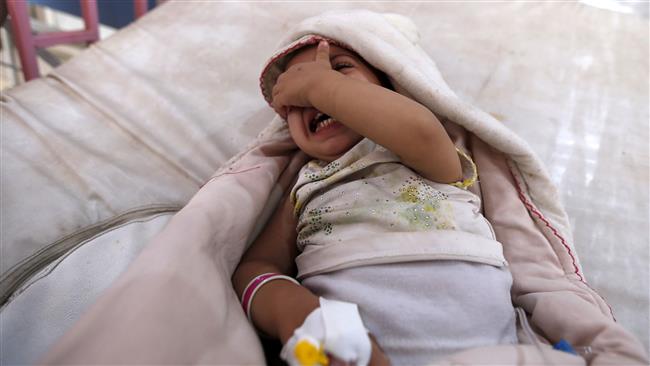
RNA - According to a statement released by the United Nation health agency on Monday, a total of 503,484 cases, suspected to be infected with Cholera, and 1,975 deaths, attributable to the outbreak, were documented during the period in Yemen.
Caused by ingestion of food or water contaminated with the bacterium Vibrio cholerae, cholera infection first became epidemic last October and spread until December when it dwindled, but only to worryingly resurface again in late April.
The statement added that the overall caseload had decreased considerably since July, but warned that the disease was still infecting an estimated 5,000 people each day.
“The spread of cholera has slowed significantly in some areas compared to peak levels but the disease is still spreading fast in more recently affected districts, which are recording large numbers of cases,” it further said, adding that more than 14 million Yemenis remain cut off from clean water and sanitation, and waste collection has no longer been carried out in major cities.
The agency went on to say that around 30,000 critical health workers had not been paid salaries during the past year and critical medicines were lacking.
“These doctors and nurses are the backbone of the health response – without them we can do nothing in Yemen. They must be paid their wages so that they can continue to save lives,” said Tedros Adhanom Ghebreyesus, WHO Director-General.
Since March 2015, Yemen has came under heavy airstrikes by Saudi Arabia’s fighter jets as part of a brutal campaign against the Arabian Peninsula country in an attempt to crush the popular Houthi Ansarullah movement and reinstall the former president, Abd Rabbuh Mansur Hadi, a staunch ally of Riyadh. More than 12,000 people have been killed since the onset of the invasion and much of the country's infrastructure has been ravaged in Saudi airstrikes.
The relentless aerial aggression has put well more than half of all health facilities in Yemen in a state of complete or partial shutdown. Furthermore, there are critical shortages in medical staff in over 40 percent of all districts, according to Yemen’s Health Ministry.
Last year, Hadi, who has occupied Yemen's southwestern port city of Aden with the help of Riyadh, his loyalists and militia, moved the country's central bank from Sana'a to Aden, creating a growing economic crisis in the country.
Hadi claimed that Houthis, which is in control of large swaths of Yemen, including the capital, looted the bank; an allegation that was categorically rejected by the Houthis, who has been running state affairs and defending the nation against Saudi military campaign over the past two years.
The US and the UK have been providing the bulk of the military ordnance used by Saudi Arabia in the war. London has licensed 3.3 billion pounds worth of weapons since the beginning of Saudi war on Yemen.
Washington also sealed a multibillion arms deal with Riyadh when US President Donald Trump made his maiden visit abroad in May. The deal, which is worth $350 billion over 10 years and $110 billion that will take effect immediately, was hailed by the White House as a significant expansion of the security relationship between the two countries.
847/940